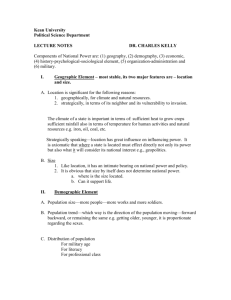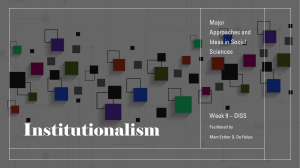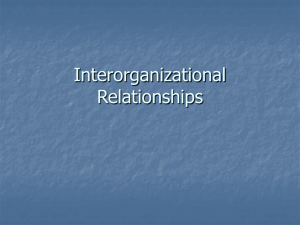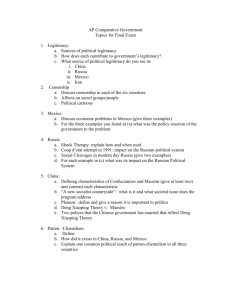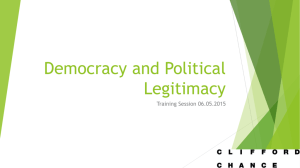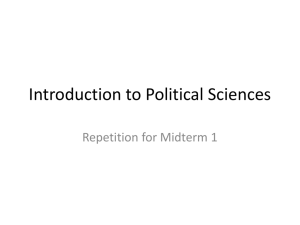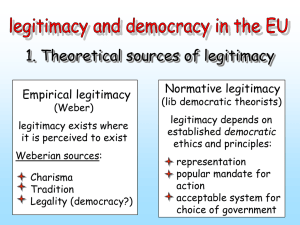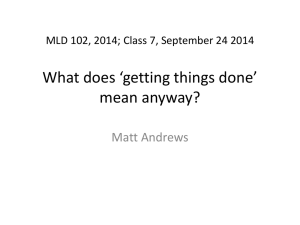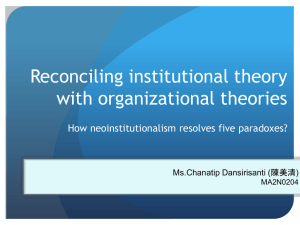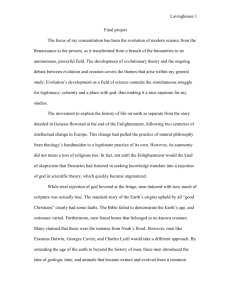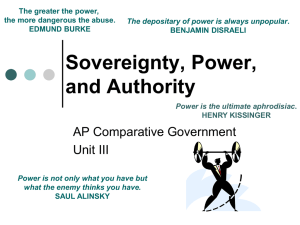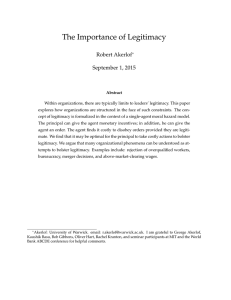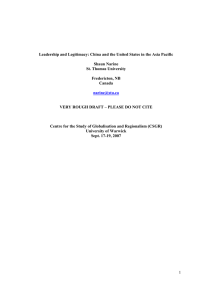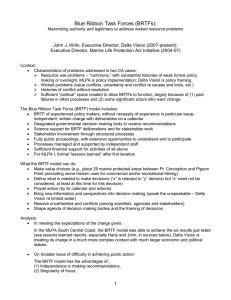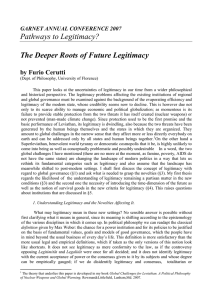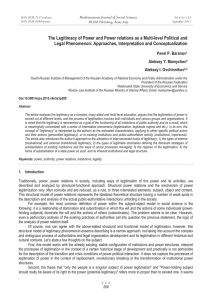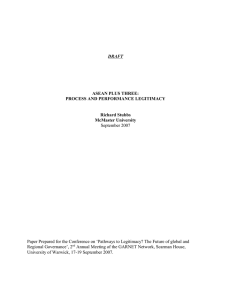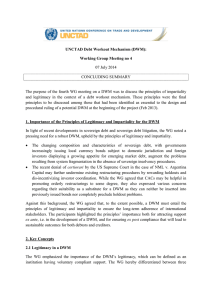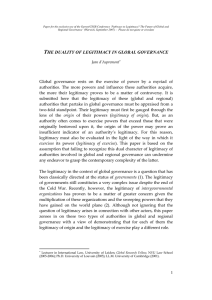Ecologists and Institutionalist: Friends or Foes
advertisement
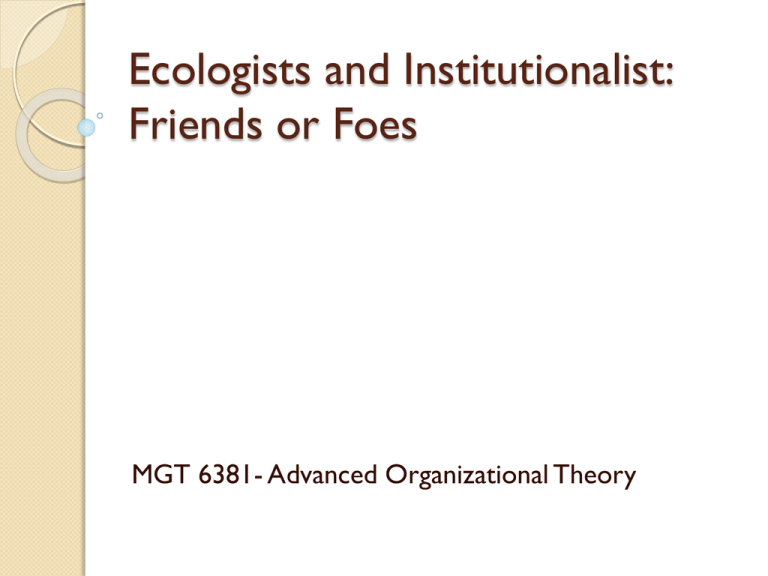
Ecologists and Institutionalist: Friends or Foes MGT 6381- Advanced Organizational Theory Authors: Heather A. Haveman and Robert J. David Heather A. Haveman ◦ Professor at Haas Business School ◦ Research interests – organizational theory (ecology & institutionalism), economic sociology, social movements, social history, entrepreneurship, organizational demography, gender, careers, social mobility Robert J. David ◦ Associate Professor at McGill University ◦ Research interests - evolution of practices, organizations, and industries from an institutional perspective Organizational Ecology Seeks to understand the distribution of organizations across different environments Core assumption – understanding organizational diversity requires ‘population thinking’ Populations – aggregates of organizations that share a common dependence on material and cultural environments Empirically, populations are sets of organizations that produce similar goods or services, use similar resources, and have similar identities Ecology – Main Assumptions Density dependence Resource portioning Inertia Organizational form as identity Density Dependence Organization founding and failure depend on population density When density is low, increasing density increases legitimacy At higher levels, more organizations compete for resources As density increases, competition begins to overwhelm legitimacy as the primary mechanism driving vital rates Density –dependence models can be applied to subpopulations and to compare organizational similarities and differences Are there times when this model does not apply? Resource Partitioning Focuses on competition and mutualism between organizations that serve a wide range of clients with a diverse array of products (generalists) and organizations that focus on a limited clientele, offering a narrower set of products (specialists) When there are economies of scale and a resource distribution with a single rich centre and poor peripheral region, the resource ‘space’ becomes partitioned with generalist occupying the centre and specialist occupying the periphery Increased competition between generalists leads to higher failure rates for generalist and lower failure rates for specialists Inertia Organization ecology assumes that the core features of an organization change slowly, if at all 8 constraints on adaption 1. 2. 3. 4. 5. 6. 7. 8. Investment in plant, equipment, and specialized personnel Limits on the internal information received by decision-makers Vested interests Organizational history Legal and economic barriers to entry and exit Constraints on external information gathered by decision-makers Legitimacy considerations Problem of collective rationality and the general equilibrium These constraints favor inert organizations When organizations change, resources are diverted from operating to reorganizing, reducing effectiveness and increasing the likelihood of failing Though change can be detrimental, organizations can learn to change General consensus is that failure rates generally decline with size and increase with age. Is this still true in the current economy? Organizational Form As Identity Analyzes organizational forms as identities or social codes, which are recognizable patterns that take on rule-like standing and get by social agents Rules of conduct provide guidelines for members of a population by delimiting what they should and should not be and do Signals generate a cognitive understanding about the populations because they define what observers understand the members of an organizational population are and what they do Works in tandem with other strands of organizational ecology Big OT questions: Why do organizations exist? Why are firms the same/different? What causes changes in organizations? Why do some firms survive and others don’t? Emerging issue? Institutionalism 3 of the most important subjects in organizational institutionalism are ◦ Legitimation and institutionalization ◦ Isomorphism and diffusion ◦ Strategic action Legitimation and Institutionalization Organizations are legitimate with they are comprehensible and taken for granted as the natural way to achieve some collective goal, when they are justified and explained on the basis of prevailing values, role models, and cultural agents, when they are sanctioned or mandated by authorized actors, and when those involved cannot conceive other alternatives Legitimacy can rest of any of 3 foundations ◦ Regulative ◦ Normative ◦ Cognitive Legitimacy improves access to resources and acceptance from customers, thereby contributes to organization’s ability to persist Deinstitutionalization and delegitimation Is deinstitutionalization inevitable? Isomorphism and Diffusion Study of why organizations are similar The more prevalent an organizational structure, practice, or tactic, the more legitimate it is 3 processes driving isomorphism 1. Coercive pressures – based on regulatory legitimacy 2. Normative pressures – based on normative legitimacy 3. Mimetic pressures – based on cognitive legitimacy Strategic Action Based on premise that organizations are often proactive and control their environments, so institutionalist place conformity on a continuum of responses to the environment 1. 2. 3. 4. Compromise Avoidance Defiance Manipulation Examples? Big OT questions: Why do organizations exist? Why are firms the same/different? What causes changes in organizations? Why do some firms survive and others don’t? Emerging issue? Points of Similarity Developed as corrections to rationalist and adaptationalist theories ◦ Both theories contend that organizations could not be adapted to external conditions in a technically rational way Concerned about the variety or lack of variety of organizations Study similar phenomena ◦ Legitimacy ◦ Organizational form ◦ Emergence and spread of new organizational forms and features ◦ Organizational change ◦ Organizational survival Points of Difference Ecologist Institutionalist Scope Parsimony & generality Richness & contextual specificity Ontological Stance Empirical realists Social constructivists Theory development Collection of More emergent and overlapping theories that diffuse research agenda build upon each other Definition of legitimacy The degree to which an organizational form is taken for granted Legitimacy encompasses cognitive, normative, and regulative dimensions

